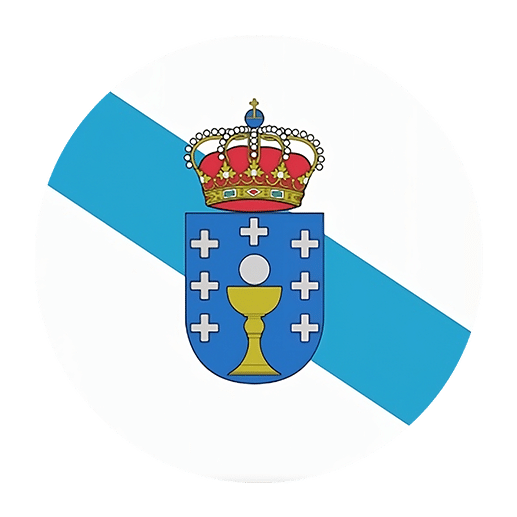Galician, a Romance language spoken in the northwestern region of Spain, shares numerous similarities with Portuguese but also stands distinct with its own unique linguistic features. One of the fundamental aspects of Galician grammar is the gender of nouns, which plays a crucial role in the language’s structure and syntax. Understanding noun gender is essential for mastering Galician, as it affects articles, adjectives, and pronouns associated with nouns. In this comprehensive guide, we will explore the concepts of masculine and feminine nouns in Galician, providing you with the knowledge and tools necessary to navigate this important aspect of the language.
Overview of Gender in Galician
Similar to other Romance languages, Galician nouns are categorized into two grammatical genders: masculine and feminine. Unlike English, which generally does not assign gender to nouns, Galician nouns can significantly influence the form of other words in a sentence. For example, the definite article (“the” in English) varies between masculine and feminine nouns.
Definite and Indefinite Articles
In Galician, the definite articles are as follows:
– Masculine singular: o (e.g., o libro – the book)
– Feminine singular: a (e.g., a casa – the house)
– Masculine plural: os (e.g., os libros – the books)
– Feminine plural: as (e.g., as casas – the houses)
The indefinite articles in Galician are:
– Masculine singular: un (e.g., un libro – a book)
– Feminine singular: unha (e.g., unha casa – a house)
– Masculine plural: uns (e.g., uns libros – some books)
– Feminine plural: unhas (e.g., unhas casas – some houses)
Recognizing Masculine and Feminine Nouns
Determining the gender of a noun in Galician often involves recognizing certain patterns and endings. While there are exceptions, these general rules can help you identify the gender of most nouns.
Masculine Nouns
1. **Endings in -o:** Many masculine nouns end in -o. For example:
– o gato (the cat)
– o carro (the car)
2. **Endings in -or:** Nouns ending in -or are typically masculine. For example:
– o profesor (the teacher)
– o computador (the computer)
3. **Days of the Week, Months, and Seasons:** These are generally masculine. For example:
– o luns (Monday)
– o xaneiro (January)
– o inverno (winter)
4. **Compound Nouns:** When nouns are formed by combining two words, the resulting noun is usually masculine. For example:
– o paraugas (umbrella) – from “parar” (to stop) + “augas” (waters)
Feminine Nouns
1. **Endings in -a:** Many feminine nouns end in -a. For example:
– a mesa (the table)
– a escola (the school)
2. **Endings in -ción and -sión:** Nouns ending in -ción or -sión are usually feminine. For example:
– a nación (the nation)
– a televisión (the television)
3. **Endings in -dad and -tad:** Nouns with these endings are typically feminine. For example:
– a liberdade (freedom)
– a amistade (friendship)
4. **Letters and Islands:** Names of letters and islands are generally feminine. For example:
– a be (the letter B)
– a Illa de Ons (Ons Island)
Common Exceptions and Irregularities
While the above guidelines cover many cases, there are exceptions and irregularities that you should be aware of:
1. **Masculine Nouns Ending in -a:** Some masculine nouns end in -a. For example:
– o día (the day)
– o mapa (the map)
2. **Feminine Nouns Ending in -o:** A few feminine nouns end in -o. For example:
– a mano (the hand)
3. **Gender-Neutral Nouns:** Certain nouns can be either masculine or feminine depending on the context, especially when referring to people. For example:
– o estudante / a estudante (the student)
Adjectives and Agreement
In Galician, adjectives must agree with the gender and number of the nouns they describe. This means that the form of an adjective will change depending on whether the noun it modifies is masculine or feminine, singular or plural.
Examples of Adjective Agreement
1. **Masculine Singular:**
– O coche vermello (The red car)
– O libro interesante (The interesting book)
2. **Feminine Singular:**
– A flor fermosa (The beautiful flower)
– A casa grande (The big house)
3. **Masculine Plural:**
– Os coches vermellos (The red cars)
– Os libros interesantes (The interesting books)
4. **Feminine Plural:**
– As flores fermosas (The beautiful flowers)
– As casas grandes (The big houses)
Pronouns and Agreement
Pronouns in Galician also change based on the gender and number of the nouns they replace. Here are some examples of subject pronouns:
– He: el
– She: ela
– They (masculine or mixed): eles
– They (feminine): elas
Possessive pronouns and adjectives also reflect gender:
– His book: o seu libro
– Her book: o seu libro
– Their house (masculine or mixed): a súa casa
– Their house (feminine): a súa casa
Notice how “seu” and “súa” change to agree with the gender of the noun they modify.
Practice Exercises
To solidify your understanding of gender in Galician, here are some practice exercises. Try to determine the gender of the following nouns and use them with the correct definite article:
1. ___ libro (book)
2. ___ flor (flower)
3. ___ sol (sun)
4. ___ canción (song)
5. ___ profesor (teacher)
Answers:
1. o libro (masculine)
2. a flor (feminine)
3. o sol (masculine)
4. a canción (feminine)
5. o profesor (masculine)
Next, try to make the following sentences agree in gender and number:
1. O (coche, vermello)
2. A (flor, bonito)
3. Os (libro, interesante)
4. As (casa, grande)
Answers:
1. O coche vermello
2. A flor bonita
3. Os libros interesantes
4. As casas grandes
Conclusion
Understanding the gender of nouns in Galician is a fundamental aspect of mastering the language. By recognizing patterns in noun endings and practicing with articles, adjectives, and pronouns, you can become proficient in using masculine and feminine forms correctly. Remember that while there are rules and guidelines, exceptions do exist, so continual practice and exposure to the language are key. With dedication and practice, you will find that navigating noun gender in Galician becomes increasingly intuitive and natural. Happy learning!

